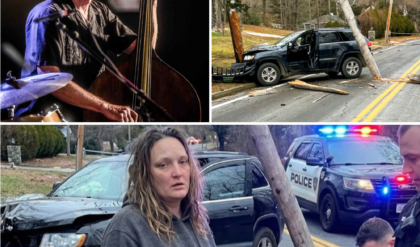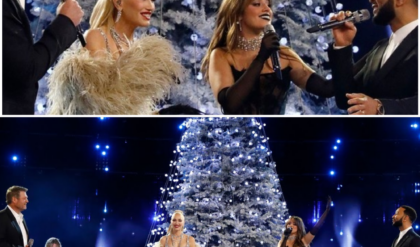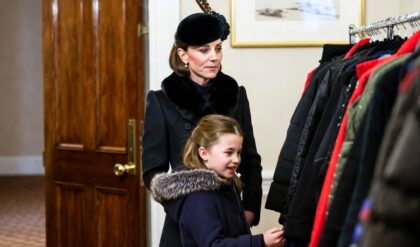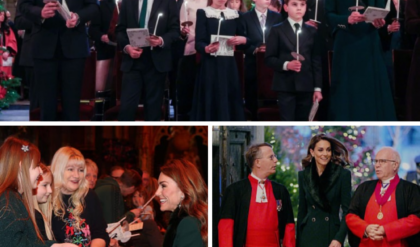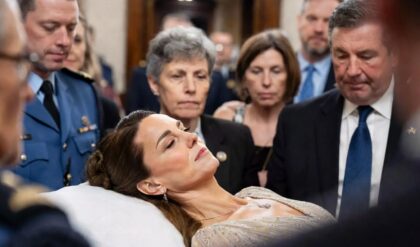
Beyond Fest hit overdrive Tuesday night with an electric anniversary screening of Jan de Bont’s iconic blockbuster Speed followed by an epic 50-minute Q&A with the filmmaker and his stars Keanu Reeves and Sandra Bullock in a reunion 30 years in the making.
It was clear long before showtime that the event — part of the American Cinematheque at Egyptian Theatre series — would be special. Reeves, Bullock and de Bont had never previously shared the same stage to discuss their work on the 1994 film, which became a surprise hit after it grossed north of $350 million worldwide on a $30 million budget. It’s been more than a decade since Reeves and Bullock had a public outing together though they often have nice things to say about one another on talk shows or in magazines.
It was also a rare night out for Bullock who has kept a low profile since the successful release of The Lost City in summer 2022 and the death of her partner Bryan Randall a year later, in August 2023. The only recent interview she’s done was a joint chat with Reeves for journalist Kris Tapley and his Speed fan podcast, 50 MPH, to mark the milestone 30th anniversary. Tapley, credited as the driving force behind the Beyond Fest screening, helped kick off the event with a brief introduction. “I cannot wait for the energy in this room tonight,” Tapley teased after noting the size of the crowd.

All 516 seats inside the Egyptian were occupied, much to the dismay of the dozens stuck outside in the overflow line, some of whom had been queued up in the Egyptian courtyard for hours hoping to snag a seat. Those who did get to watch the Twentieth Century Fox actioner made the most of its 1 hour, 56-minute running time by erupting in boisterous applause no less than half a dozen times after critical moments in the film. They also welcomed the trio to the stage with a standing ovation.
Even de Bont was impressed by what he saw. A few questions into the Q&A, moderated by Jim Hemphill, the filmmaker took a brief detour to offer his own cheers to his A-listers. “I have to say one thing before we continue,” he noted, “we met outside just seconds ago when I saw them for the first time in 30 years. When I saw the movie here [tonight], I’ve never been so proud of those two actors. What they did for me — quite often unnatural to them what they had to do — is just unbelievable. The relationship that these two created together is absolutely amazing. Seeing them back on the screen tonight, it was so realistic. They were absolutely perfect. All the emotions were right, all the laughing was right, all the smiling, the little smooching. It was really, really cool. I had to tell them how great they both were.”

Hemphill, de Bont, Reeves and Bullock. Hemphill closed the Q&A by saying, “I can speak from everybody when I say this was really one of the great movie-going nights of my life.” Credit: Jared Cowan for Beyond Fest at American Cinematheque at Egyptian Theatre
Written by Graham Yost, Speed casts Reeves as Los Angeles police detective Jack Traven who finds himself at the center of a hostage situation when madman Howard Payne (Dennis Hopper) rigs a Los Angeles bus with explosives. The catch? If the bus drops below 50 miles per hour, it will explode, forcing Traven to figure out how to save the passengers and avoid tragedy. After the bus driver is accidentally shot, Bullock’s Annie Porter, an unexpecting bus passenger, jumps into the driver’s seat to manage the chaotic situation.
The lively Q&A covered the behind-the-scenes creative process, the chemistry between Reeves and Bullock, who rode the success of Speed to become two of Hollywood’s most bankable and beloved stars, de Bont’s in camera approach to action — “I wanted it to all to be on real roads, real speed, real fast and real dangerous” — and, of course, the question everyone has asked for years: What about a Speed 3? Below are highlights from the conversation.

Reeves and Bullock in a still from Speed. The actors would later reteam in The Lake House while she went on to star in a Speed sequel opposite Jason Patric after Reeves passed on the opportunity. Courtesy of Twentieth Century Fox
De Bont on when he knew something special was happening during production:
“I knew we had something very early on, and at the moment I saw Keanu and Sandra working as a team and doing most of the stunts themselves, which was so great. The reactions they have are based on real reactions because they had to respond to what they were doing, and that makes it so great and so relatable. Also, the fact that there are a lot of fun lines in the movie and that it’s basically nonstop. This is real action. There’s no CGI, nothing. It’s all real.”
De Bont on how he got the gig to make his directorial debut:
“I found this [script] basically [in a pile] of the ones that were never made that would never be made at Paramount. I thought there were so many possibilities in the movie that I could really see this as exactly the type of movie that I wanted to make. It’s where everything happens nonstop and people are tied together. They’re really close together all the time and have to relate to each other. I felt like I could do a lot of things for real…because I didn’t want to do things in a studio and film it on stages. I wanted it all to be on real roads, real speed, real fast and real dangerous. When the bus goes on two wheels, it goes on two wheels. When it goes on the off ramp, yes, it hit all the cars.”
Bullock said she only got the job because other actresses passed:
“I was the new kid on the block and it was nerve wracking. I remember arriving [to the audition]. I remember the car I drove. I remember what I was thinking about. I remember the door. I walked in and I remember the room was kind of dark. I was happy to be there. I was excited. I didn’t think I’d be getting the job but the only reason I got this job was because I was fought for — that’s the only thing. Well, other people turned it down and there were other people ahead of me. I’ve met them. One, two and three couldn’t do it [to de Bont] and then you saw me in the dark room.”

Hemphill, de Bont, Reeves and Bullock. Credit: Jared Cowan for Beyond Fest at American Cinematheque at Egyptian Theatre
Reeves on why he accepted the role after initially turning it down:
“I read the second draft, and the next draft and I was like, oh yeah, OK…it could be fun. I met this mad genius and I was like, oh fuck yeah, this is a director. This is a person with a vision. This is someone who has a passion for this story. At the time, I guess what struck me was the cinematographer on Die Hard. That he shot that, I was like, fuck yeah.”
Production made use of 11 buses and nearly two dozen cameras, per Reeves:
“We’re dealing with a master cinematographer here, so the handrails [on the bus] were actually tracks for the punchy cameras. I counted 22 cameras once in the front. So, I’d be here doing my thing and Sandra would be driving. In front of us, there’d be like 22 cameras. One camera for Sandra’s hands, one camera for when I turned. There were cameras above here, there was a camera down here.” (At that point, Bullock jumped in to say, “There were no cameras down here,” nodding to her lower body.)
Bullock actually got a bus driver’s license for the film (though she didn’t drive while filming):
“The fun part was that I was at the helm of the bus but in the back there was someone driving along the roof. Someone was driving and I was being careened into whatever Jan felt I needed to smash into. But never, never [was I actually driving]. I did get my Santa Monica bus driver’s license. I did! It’s not an easy vehicle to maneuver.”
De Bont came up with the idea to have the bus go airborne when he was behind the wheel:
“I was actually driving on the freeway when I discovered that a section was missing. I thought it would be a fantastic way to end that part, or the high point of that freeway sequence. Then I started to talk to different stunt people and ask how can we do that? How fast do we have to go two reach a certain distance? We took all that weight out of bus to make it as light as possible. We had a driver in who really was kind of not sitting in this chair, he was hanging in the chair because the landing could be very bad for you. One bus was made special for that stunt and when we actually were ready to shoot it, I was trying to be really nice to the driver, to the stuntman. I said, ‘It’s really important that you get a good speed, otherwise you won’t make it.’ He said, ‘Oh, yeah, yeah, yeah, I can do it.’ The first time we filmed it…he got scared at the last moment on the ramp and he started slowing down and unfortunately, he didn’t make it to the other side and he landed on seven cameras right below all placed to film it coming over. That bus was destroyed. I said, ‘Don’t tell the studio, don’t tell the studio.’”
During the pivotal scene exiting the bus, Bullock credited Reeves for more than his acting:
“I had this dress that was very light, and I had a body suit underneath. When we started rehearsing, I noticed that the velocity of air would shoot the skirt over my head, the bottom part. Keanu’s job was, for me the most important thing, which was to put [his] hands in a way that the skirt doesn’t fly over my head. Not only did you have to do the stunt to keep me safe, he had to keep my integrity intact by keeping things that didn’t need to be seen on a 17-foot screen hidden. That’s what I remember of that day.”
Reeves and de Bont on the late Dennis Hopper, who played the film’s villain:
“He’s so charismatic and he’s so committed,” Reeves praised with de Bont jumping in to say, “And he’s also a little nuts, too.” Reeves: “Yeah. And we say that he’s a little nuts but he’s a total fucking pro. He’s a total pro. We had some ridiculous dialogue and it was just awesome.”
Bullock on working with Hopper:
“I was surprised at how — I don’t like this word — normal he was. I mean, he might’ve been weird to you guys, but he was very sweet to me. He loved his art. He loved talking about art, collecting art, local artists. He was a man that just couldn’t get enough of life. Life was happening too fast and he just wanted more and more and more from it. I was in the company of such extraordinary people at such an early time in my career and I got everything. I got everything under one umbrella. To work with Dennis you had to sort of shake it off and step into the role, but there were times when you sort of had to pause and his whole filmography would flash with before your eyes.”
De Bont says the success of a film like Speed delivers unexpected challenges:
“Once you make successful movies, it’s really hard to keep going. The stress of taking those movies is pretty big because it’s so intense, and there’s so much action happening all the time that as a director you are completely exhausted for a long time after the movie is over. My life did change. You get more projects, that’s what is fantastic, of course. But I also find it really hard on myself to come up with new ideas that I like. Because I feel like when I direct, I feel like I am the audience. What would I want to see now if I was the audience in the theater?”
On the possibility of Speed 3:
“The geriatric version. It won’t be fast,” Bullock quipped before turning her attention to de Bont. “All these things happened because the crazy man in the greenish jacket over there. He’s so soft and gentle today and I’m like, that’s not the man I remember. But he’s the man who put the energy and the idea together, knew what the audience wanted and demanded it from everyone and everyone stepped up to play it. So what would that movie be that would make Jan’s brain and brilliance happy? It would require a lot from everybody. I don’t know if we’re in an industry anymore that’s willing to tolerate it and be brave enough to do it. Maybe I could be wrong. … If he can’t make [what’s in his brain] for the audience, then he’s failed it felt like. I don’t know what we could do that would be good enough for the audience.”
